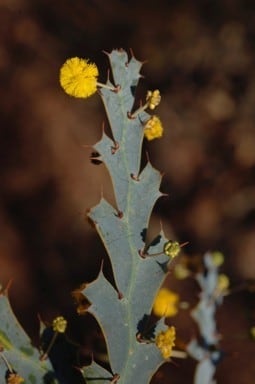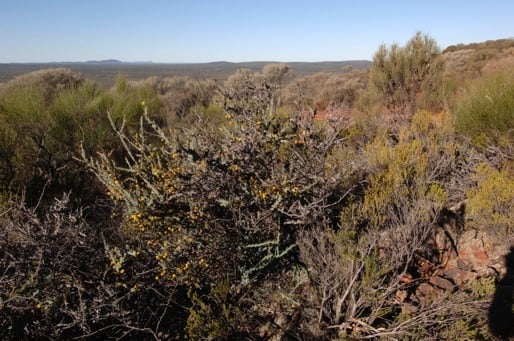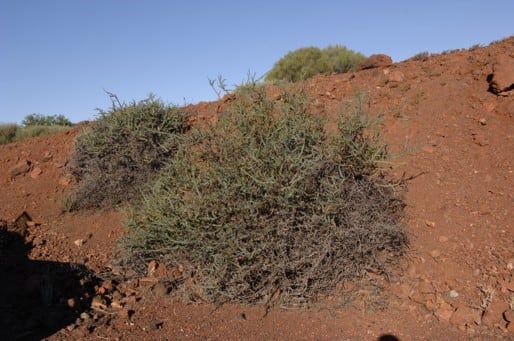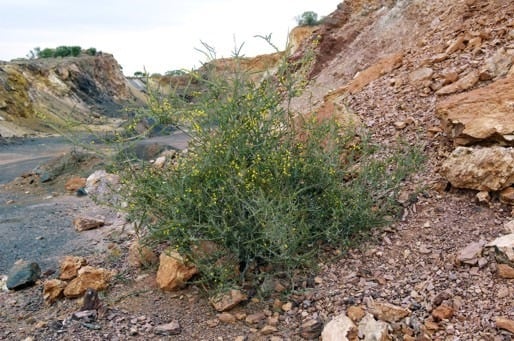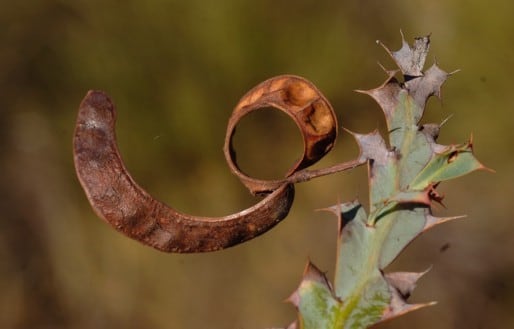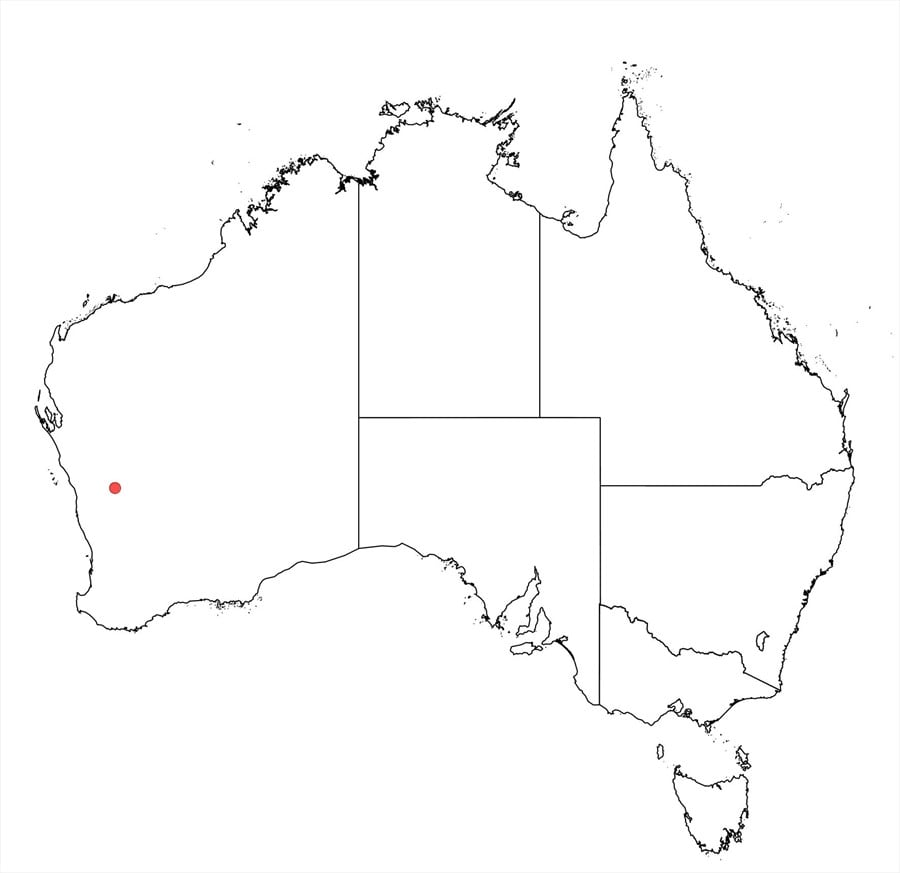Acacia woodmaniorum Maslin & Buscumb
WATTLE
Acacias of Australia
Common Name
Woodman’s Wattle
Family
Fabaceae
Distribution
Restricted to the Blue Hills Ra. (c. 80 km E of Morawa), W.A.; known from a few populations, covering c. 40 km² area.
Description
Sprawling, prickly shrub (0.5–) 1–2 m high, the senescent phyllodes persisting on lower branches below the living crown. New shoots red when first initiated. Branchlets shallowly flexuose, glabrous. Phyllodes continuous with branches and bifariously decurrent to form opposite wings along the branches, the wings 2–10 mm wide, coriaceous, glaucous to subglaucous, glabrous and ±lightly pruinose; free portion of phyllodes bearing 2 or 3 prominent, rigid, brown spines 3–6 (–8) mm long, marginal nerve yellow, with 1 or 2 main nerves, the minor nerves often sparingly bifurcating; gland single, sessile and plane, 1–6 mm above base. Inflorescences simple or rudimentary racemes with axis <1 mm long; peduncles 8–15 (–20) mm long, the basal bracts subpersistent, c. 1 mm long and brown; heads globular, 27–28-flowered, light golden. Flowers 5-merous; sepals free, c. ½ length of petals. Pods flat, straight to variously curved, narrowly oblong, 10–45 mm long, 5–7 mm wide, thinly coriaceous-crustaceous, glabrous. Seeds transverse or occasionally longitudinal, irregularly shaped, 3–4 mm long, arillate.
Habitat
Grows in loam or silt on banded ironstone ridges of hematite and magnetite, typically high in the landscape, in shrubland or thickets with Acacia, Allocasuarina and/or Eucalyptus spp.
Specimens
W.A.: E of Morawa [precise localities withheld for conservation purposes], D.Coultas 1 (PERTH), C.Godden & G.Woodman C 78.1 (PERTH), G.J.Keighery 16628 (AD, PERTH) and A.Markey & S.Dillon 3322 (DNA, PERTH).
Notes
A very distinctive species on account of its continuous and decurrent phyllodes that form bifarious wings along the branches, with the free portion of the phyllodes bearing 2 or 3 prominent spines. Despite these unusual characters the inflorescence and carpological characters, and phyllode nervature indicate that A. woodmaniorum is closely related to the ‘A. pravifolia group’. The winged branches superficially resemble those of A. alata (particularly A. alata var. biglandulosa) but the species are not closely related.
FOA Reference
Data derived from Flora of Australia Volumes 11A (2001), 11B (2001) and 12 (1998), products of ABRS, ©Commonwealth of Australia
Author
B.R.Maslin
J.Reid
This identification key and fact sheets are available as a mobile application:
URL: https://apps.lucidcentral.org/wattle/
© Copyright 2018. All rights reserved.
